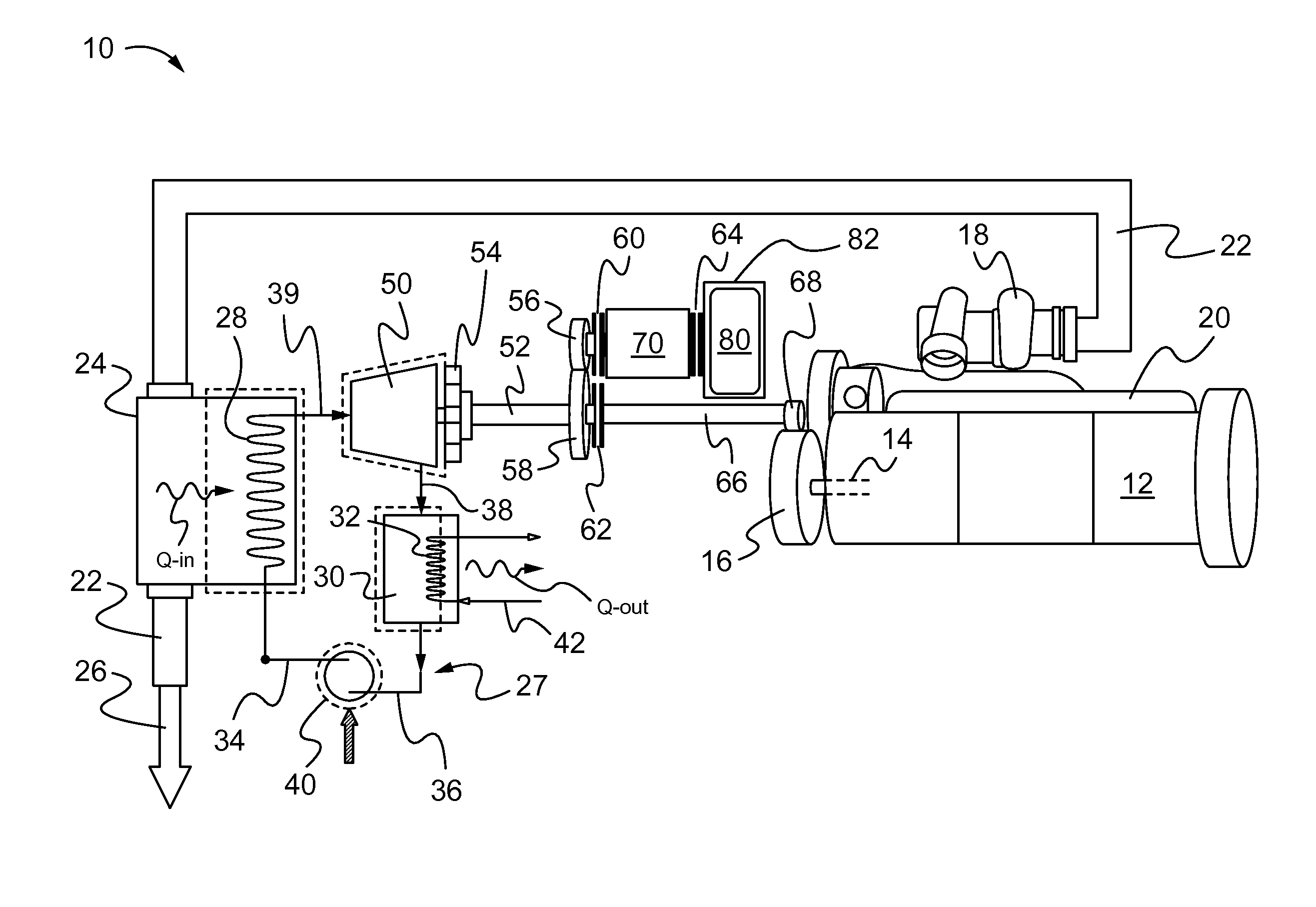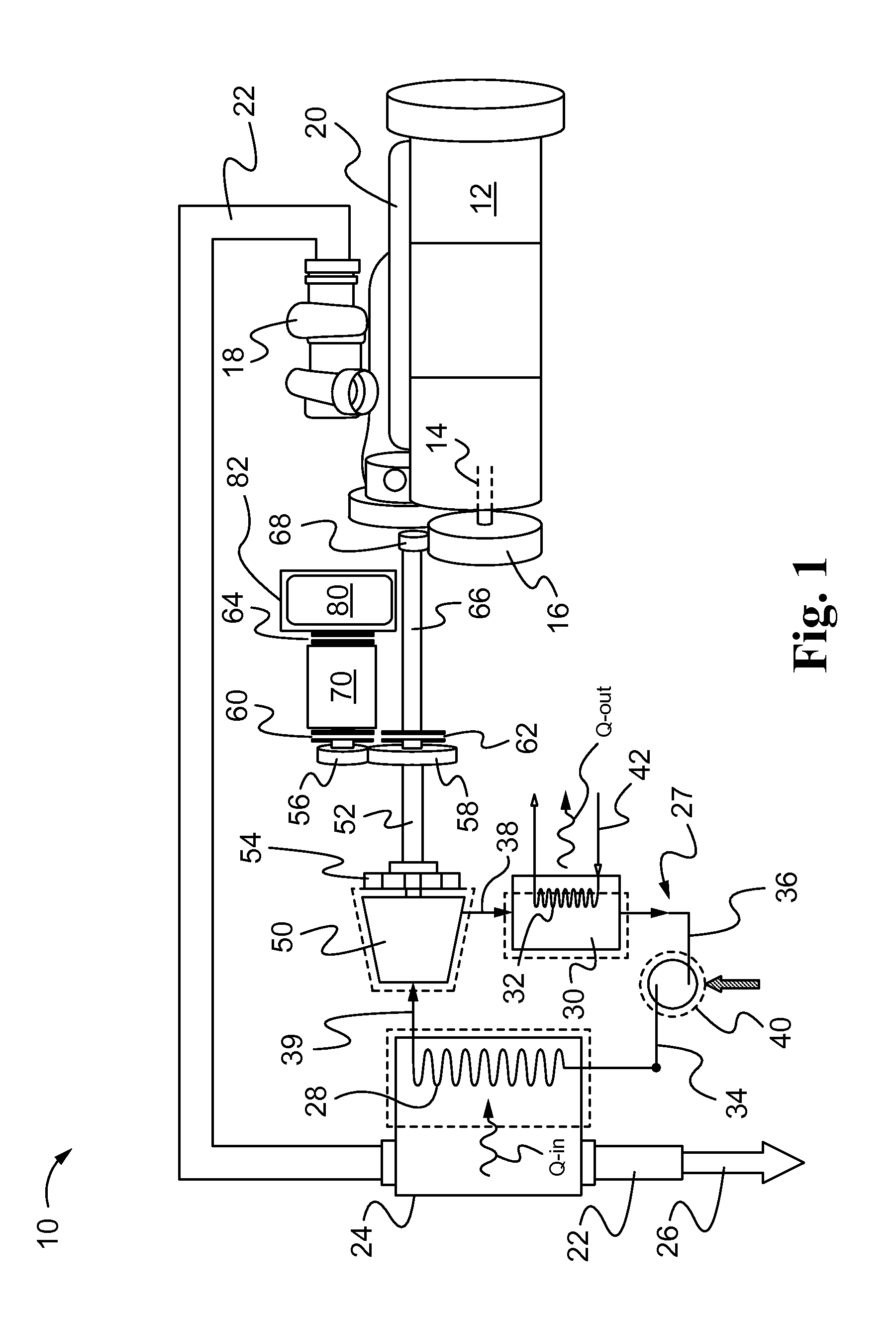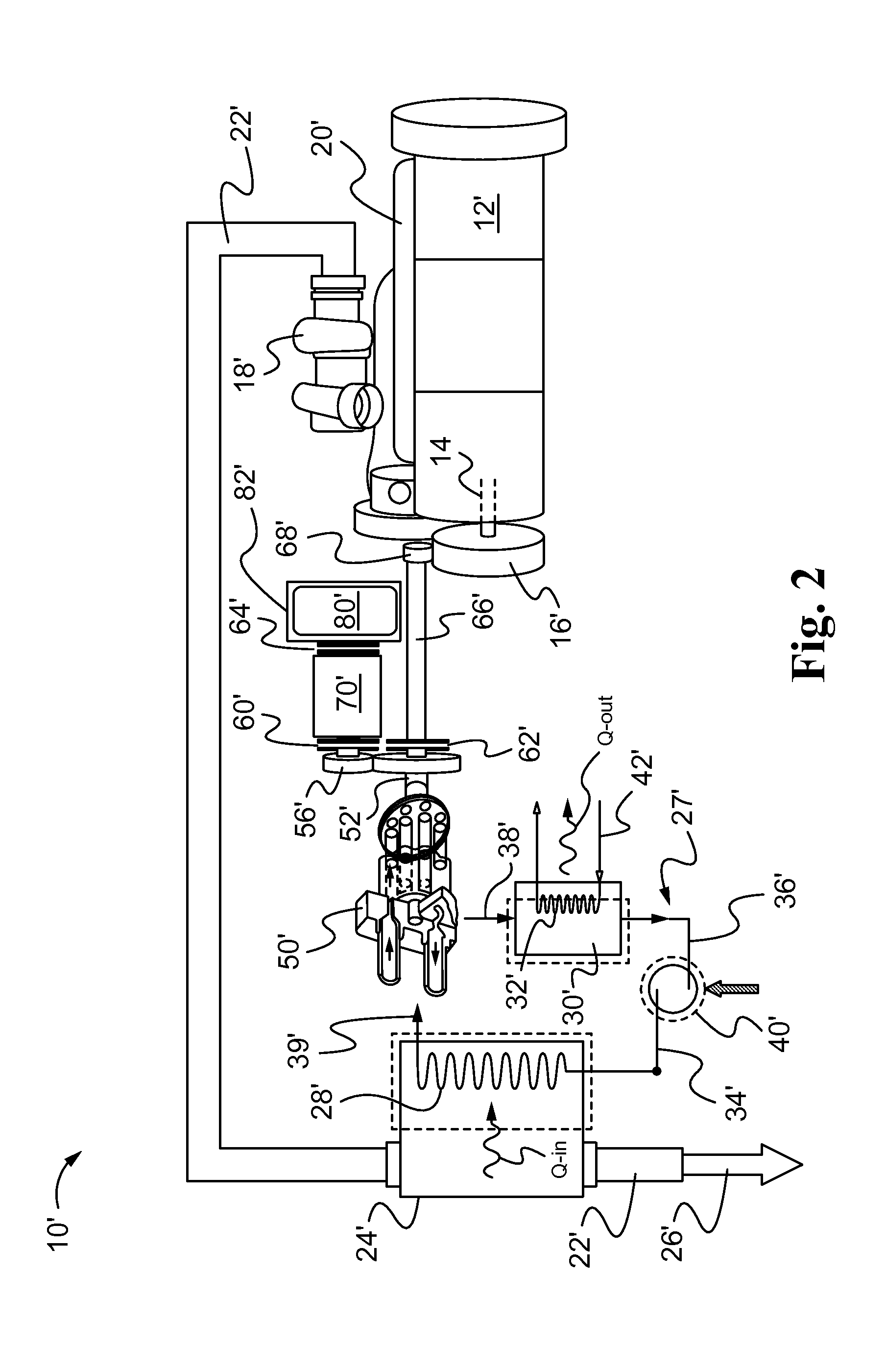Flywheel Mechanical Energy Derived from Engine Exhaust Heat
a technology of mechanical energy and engine exhaust, which is applied in the field of flywheel and clutch subsyste, can solve the problems of long-standing loss of engine heat energy from internal combustion engines, and none of such systems have employed the capability of transient storage and use of purely mechanical energy
- Summary
- Abstract
- Description
- Claims
- Application Information
AI Technical Summary
Benefits of technology
Problems solved by technology
Method used
Image
Examples
Embodiment Construction
[0012]Referring initially to FIG. 1, an engine exhaust heat recovery system 10 is displayed in accordance with one disclosed embodiment. The heat recovery system 10 includes an engine 12, having an engine crankshaft 14, shown in phantom. The crankshaft 14 rotates an engine output gear 16, as shown.
[0013]A turbocharger 18 is situated atop of an exhaust gas header 20 of the engine 12. An exhaust gas conduit 22 extends from one end of the turbocharger 18 as shown. The exhaust gas conduit 22 discharges into a first heat exchanger, a boiler 24 in the embodiment shown, and heat shown as Q-in, is transferred from engine exhaust gases 26 passing through the conduit 22.
[0014]Those skilled in the art will appreciate that a single closed loop fluid 27 may be employed to accommodate transfer of energy from the hot exhaust gases 26. For this purpose, boiler coils 28 may enable the passage of the fluid 27 through the closed loop fluid system described herein. Ideally, the fluid 27 is two-phased, ...
PUM
 Login to View More
Login to View More Abstract
Description
Claims
Application Information
 Login to View More
Login to View More - R&D
- Intellectual Property
- Life Sciences
- Materials
- Tech Scout
- Unparalleled Data Quality
- Higher Quality Content
- 60% Fewer Hallucinations
Browse by: Latest US Patents, China's latest patents, Technical Efficacy Thesaurus, Application Domain, Technology Topic, Popular Technical Reports.
© 2025 PatSnap. All rights reserved.Legal|Privacy policy|Modern Slavery Act Transparency Statement|Sitemap|About US| Contact US: help@patsnap.com



